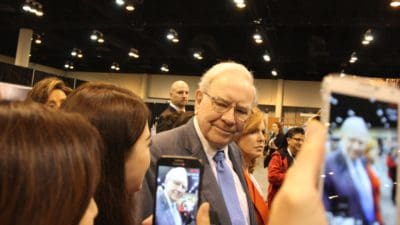This article was originally published on Fool.com
Manchester United (NYSE: MANU.US) spent £150 million last summer on transfers. With the transfer window back open until Feb. 2nd and the rumor mill in full swing, it’s a good time to look at how the various FA and UEFA rules on spending and costs could affect the club. Making some basic assumptions, my analysis shows Manchester United doesn’t have much room to maneuver in this transfer window.
With Victor Valdes recently signing on with a free transfer, the most popular rumors now revolve around:
- Ron Vlaar from Aston Villa
- Ilkay Gundogan and Mats Hummels from Borussia Dortmund
- Raphael Varane from Real Madrid
- Kevin Stootman from Roma
- Paul Pogba from Juventus
Besides a transfer of Ron Vlaar — which is possible, particularly if Aston Villa wants some money instead of letting him go on a free transfer at the end of the season — the rest of the players are surely needed by their respective clubs and would be too expensive for Manchester United to acquire.
Financially, there are four things for the club to consider when looking at transfer spending moving forward: UEFA’s Financial Fair Play (FFP) regulations and then Premier League’s home grown talent rule, wage uplift rule, and break-even rule.
Break-even tests
UEFA FFP and the Premier League break-even rules are similar. While UEFA FFP regulations don’t apply this season, assuming Manchester United qualifies for European play in 2015, this season’s decisions will matter.
Manchester United revenue is expected to drop £40 million to £50 million just from missing out on the Champions League this season. At the same time, expenses have risen after the club signed multiple players. However, the steady increase in revenue from sponsorships, which should rise nearly 25% this season to £170 million as a result of the notable $70 (£46) million a year Chevy kit sponsorship, means the club will be close to breakeven this season.
With both break-even rules measured over a three year period — Manchester United has been profitable the past two years — basically any spending during this transfer window won’t affect either break-even test for next year. You can read more about Manchester United transfers, financial fair play, and the break-even tests in my upcoming article.
Homegrown talent
The next rule teams need to keep in mind for transfers and squad composition is the homegrown talent rule, which requires teams to have 8 “homegrown” players in order to have a full 25-man roster of players over the age of 21. Without getting into all the details, Manchester United is well above that threshold with 11 qualifying players, so the roster is unaffected.
Wage uplift
The Premier League’s wage uplift rule is the one area that may impact the team during this transfer window. While fans are hoping for a big money signing announcement, this seems unlikely under the wage uplift rule unless another player is transferred out at the same time.
The wage uplift rule was started as part of the Premier League’s “short term cost control” — it compares the total player wages ending in each season against the benchmark year. The 2012 to 2013 season currently serves as the benchmark, and the rule applies to the seasons ending in 2014, 2015, and 2016.
When you compare player wages to the benchmark year, they can either:
- Be £4 million per year higher than the benchmark year. So for the 2014 to 2015 season, that means they can only be £8 million above the wages in the 2012 to 2013 season,
- Or wages can be higher than the rule if the increase is funded by the club’s “own revenue,” which includes essentially all revenue besides Premier League TV money and includes profit from player sales.
For Manchester United, total “own revenue” was £301 million in the 2012 to 2013 season. With the team not making the Champions League, I expect “own revenue” including profit from player sales to be around £315 million to £325 million for this season. So Manchester United’s player wages are allowed to be £14 million to £24 million above the 2012 to 2013 level.
There are two things to note:
- It is remarkable that Manchester United’s own revenue is up despite the approximate £50 million hit the club is taking from not making the Champions League. This shows how exceptional the organization is when it comes to generating commercial and sponsorship revenue.
- The “wage uplift rule” applies only to player wages, not staff wages.
The mistake I’ve seen a few analysts make is to simply pull wages from the annual report, but that number includes all the wages and social security costs for the club’s 800-plus employees and 2,300 temporary staff, in addition to the 49 players on the first team squad.
So we have to make some adjustments to estimate the player wage uplift.
Club wages and salaries were £158 million in the 2012 to 2013 season. At the end of last season, Manchester United added 16 coaching, 13 commercial, 22 media, and 78 other staff for a total of 126 new employees compared to the 2012-2013 season. Using the club guidance for wages and assuming the employee numbers are unchanged, we can back out the social security costs and some other small costs, so my estimate of wages and salaries is £175 million to £182 million for the 2014 to 2015 season.
So the total wage uplift is £17 million to £24 million. However, we need to back out the added non-player employees’ wages. Assuming an average £60,000 salary across the 126 employees, we get £7.5 million.
That means player wages rose around £10 million to £17 million. To summarize:
| (in millions) | 2012 to 2013 Benchmark |
2013 to 2014 | 2014 to 2015 (Estimates) |
|---|---|---|---|
| “Own Revenue” | £301.4 | £350.4 | £315 to £325 |
| “Own Revenue Uplift” | £49.0 | £14 to £24 | |
| Wages and Salaries | £158.0 | £189.2 | £175 to £182 |
| Estimated non-player wage increase | £7.5 | £7.5 | |
| Estimated Player Wage Increase | £23.6 | £10 to £17 |
Source: Manchester United 20-F, FQ4 2014 guidance, and author estimates.
With the player wage increase estimated at £10 million to £17 million and “own revenue” up only £14 million to £24 million, that leaves little room for a major signing, unless there is also an accompanying sale or player loan.
Manchester United transfers going forward
While the January transfer window is limited, things look good for this summer, regardless of whether the club makes the Champions League or not. The £75 million a year Adidas deal will provide a big boost to revenue starting next season, and the club will surely add more sponsors to increase revenue between then and now. In the meantime, Ed Woodward and the Glazers have invested the club’s finances well over the past eight years, and they should continue to do so going forward.







